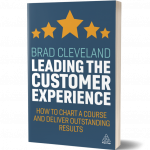Initiate and encourage voice of the employee
The late Steve Jobs once famously stated, “It doesn’t make sense to hire smart people and tell them what to do; we hire smart people so they can tell us what to do.” No one in your organization understands processes, products and customers more than your employees. Those closest to the work know it best.

Voice of Employee (VoE)
The term “voice of employee” (VoE) may be relatively new, but the concept has been around for decades. Organizations have conducted HR surveys since the 1920s. Unfortunately, most were rolled out poorly, with ineffective questions and subpar analysis. The effort for many was another corporate “check box” but without much impact. Employee surveys have since evolved significantly.
A major push forward began in the 1990s, when many organizations gave this long-established process a fresh look. The focus then was on improving the nature of survey questions. Gallup introduced the Gallup 12—a dozen questions that get to the heart of employee engagement.
These questions were viewed by some as brazenly simple. One of them, for example, is “Do you have a best friend at work?” In fact, when first proposed, many of the questions seemed, as one leader put it to me, “not business- like.” But the psychology undergirding them would be proven over time.
A more recent development has come in the form of more frequent surveys. No matter how good the questions, it’s tough to truly understand the hearts and minds of employees with a once-a-year survey.
Pulse Surveys
By adopting many of the same survey best practices used with customers (timely, relevant, correlated to a specific event), “pulse surveys” were born. An employee pulse survey is a short set of questions provided on a recurring basis (as often as every one or two weeks). Today’s technology options make them easy to administer, and they provide timely insight on the employee experience. Pulse surveys became especially widespread as Covid-19 contributed to significant changes within many organizations. Pulse surveys enable anonymous feedback and can quickly capture insight into strengths and problem areas. Response rates are high given how easy they are to complete. And they provide an easy-to-understand metric for measuring the employee experience. All told, the days of giant annual “HR surveys” are fading. Some organizations may continue yearly employee engagement surveys for trending and benchmarking purposes. But they are no longer a primary means by which leadership teams listen to employees.

Excerpt from Leading the Customer Experience: How to Chart a Course and Deliver Outstanding Results by Brad Cleveland.



0 Comments